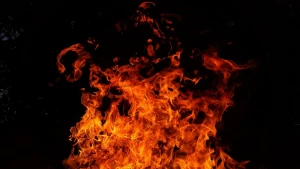
Ukraine overtakes Russia in number of tanks – Bloomberg
After over 16 months of war, new data on military supplies to Ukraine shows a substantial shift in the balance of heavy weapons on the battlefields
According to Bloomberg, a Thursday update to Germany's Kiel Institute for the World Economy's Ukraine Support Tracker database showed that Kyiv's allies have sent 471 new tanks since the start of the war, with a further 286 still on the way, despite a slowing rate of fresh commitments.
When combined with a tally of equipment lost or captured by the open source intelligence group Oryx, which is largely regarded as conservative, the data indicate that Ukraine's tank fleet has increased since the invasion began last year, while Russia's has halved.
The disparity in artillery and multiple-launch rocket systems has also shrunk, albeit by considerably smaller proportions.
“Russia has lost nearly half the combat effectiveness of its army. Last year it fired 10 million artillery shells but at best can produce 1 million shells a year. It has lost 2,500 tanks and at best can produce 200 tanks a year,” UK Chief of the Defense Staff Tony Radakin told the parliament’s defense committee.
Arms balance
War and aid have reduced Russia's advantage in heavy weapons. Oryx reports that 2,082 Russian tanks have been destroyed, damaged, abandoned, or captured since the battle began in 2022. According to the Military Balance, an annual compendium of international armories issued by the International Institute for Strategic Studies, Moscow began with 3,417 tanks.
“There are huge uncertainties around such figures, with both sides treating their losses as state secrets and significant difficulties in open-source collection — especially when it comes to Ukrainian losses, which are less well recorded. There are also no reliable figures for the number of replacement tanks or artillery pieces Russia has either produced or pulled from deep storage since the start of the war,” the publication says.
Despite massive losses, Ukraine appears to have finished the first year of the war with nearly the same number of heavy weapons it had at the start, according to Yohann Michel, a ground warfare specialist at the IISS. Michel did his own examination of the available data early this year, accounting for any biases. Since then, there have been additional losses, deliveries, and seizures of Russian tanks.
The same cannot be said for Russia, which must also reserve some of its forces for defenses elsewhere in the world's largest country. According to Michel, the shift in the balance of heavy weapons is significant but far from decisive for Ukraine's ongoing counteroffensive.
Ukraine is still paying a high price
“Even if the situation is more equal in numbers, that isn’t how it works. The problem is that Ukraine now needs to regain territory, so it’s on the offensive against well-prepared defenses and for that you need a strong advantage,” Michel said.
That explains why Ukrainian troops concentrated their efforts on eliminating Russian artillery and supply lines before committing the majority of the brigades intended for the counteroffensive. On a nearly daily basis, Ukraine's general command has claimed the destruction of more than 30 Russian artillery pieces. Artillery losses are especially difficult to establish since they are typically hidden well behind the front lines.
“The Kiel Institute’s update of its figures for February 25 to May 31 found that aid pledges were significantly lower than over the winter, despite some large packages from Germany and the US, with military pledges totaling €9 billion ($9.77 billion) in the period,” Bloomberg writes.
At the same time, the proportion of military aid increased in relation to financial and humanitarian commitments, according to the institution. According to the study, the US and EU member states have been the slowest to deliver on weapons pledges, with 286 of 757 tanks and 177 of 556 155mm and 152mm howitzers yet to arrive.
Because of the delays, the Ukrainian Armed Forces have had to rush training, frequently by separate North Atlantic Treaty Organization allies with differing practices, which could make even some of the supplied tanks less effective than they should be.
“As long as the Ukrainians don’t have a clear advantage, the cost of trying to move forward will be very high,” Yohann Michel emphasized.
- News














































